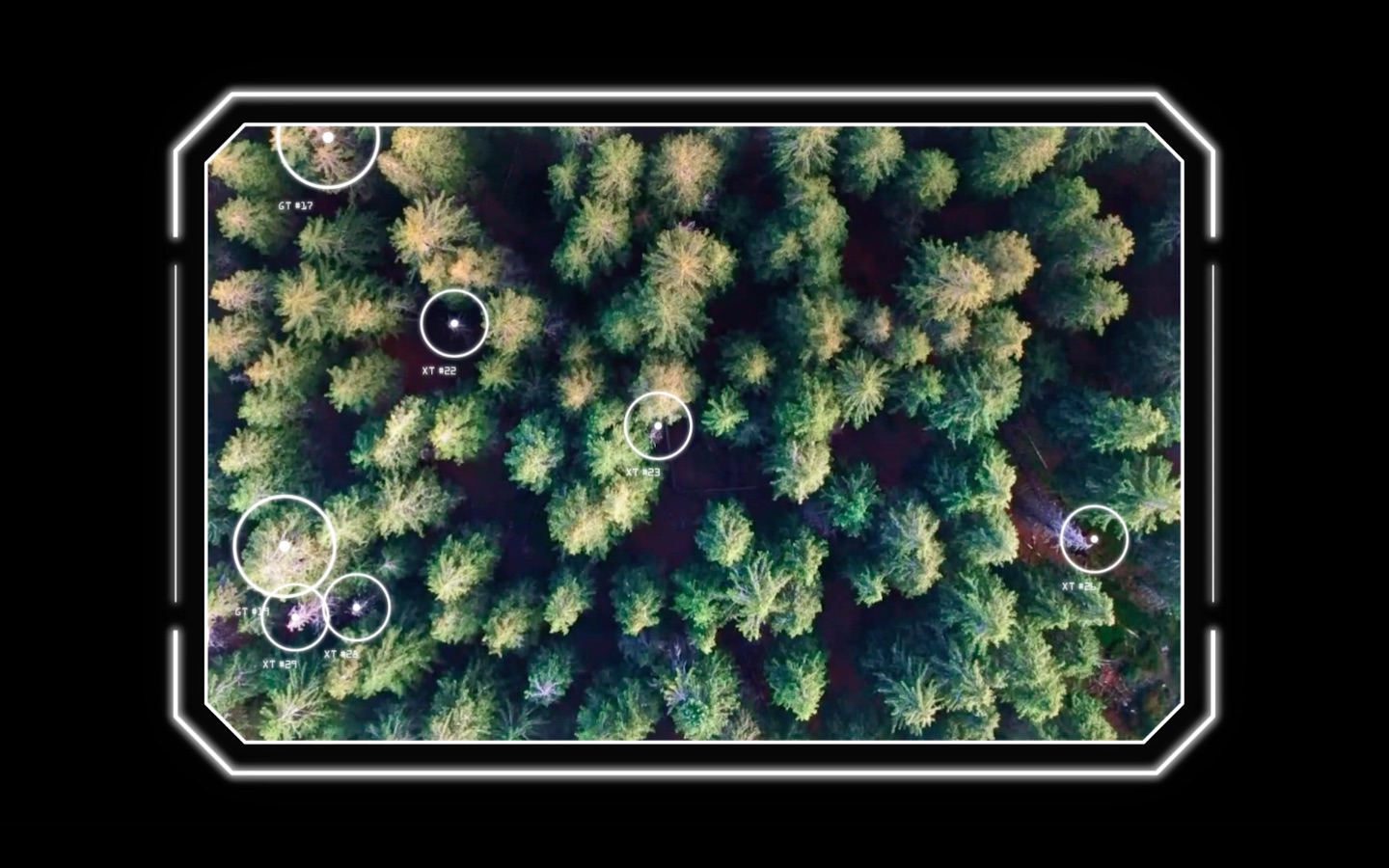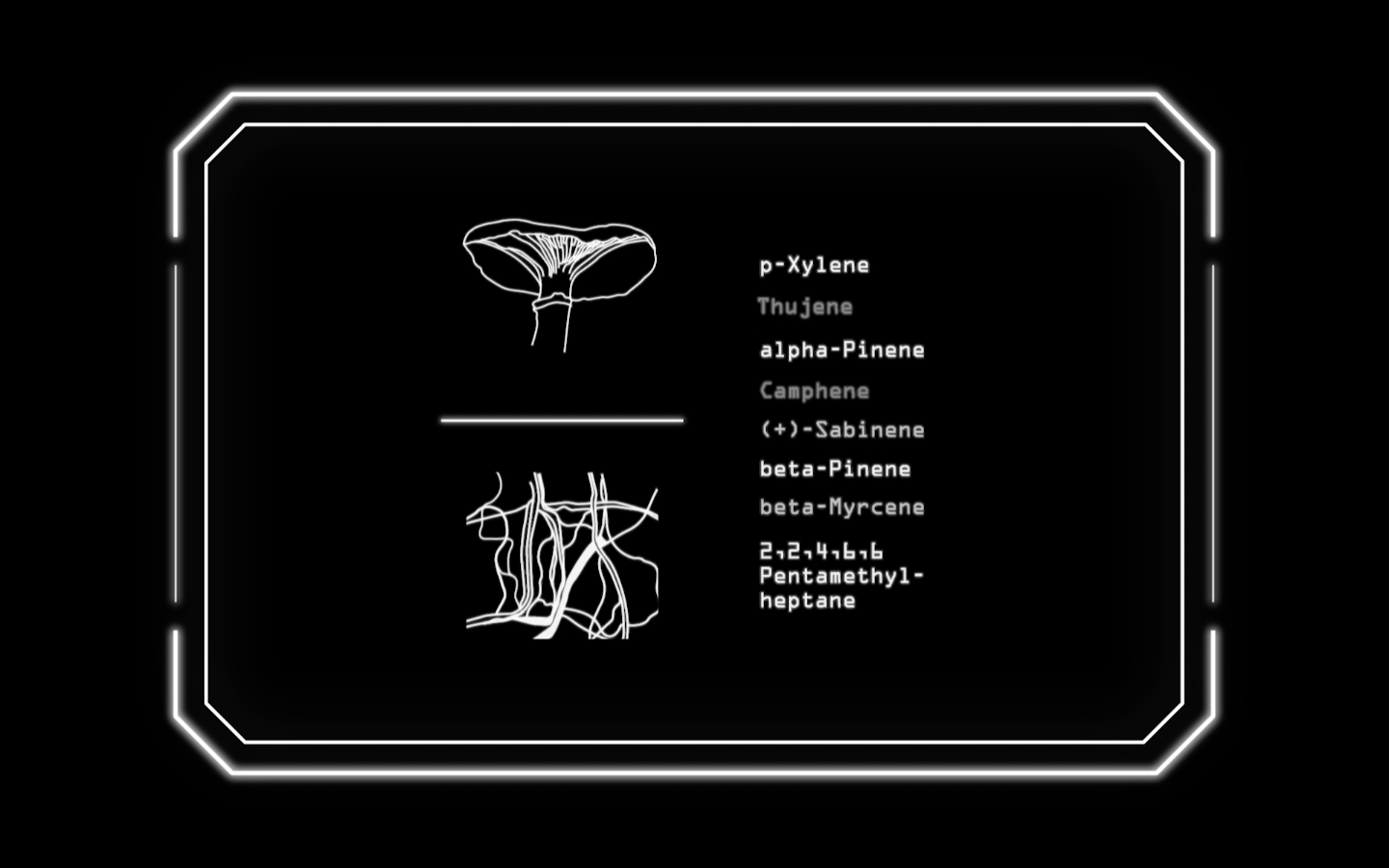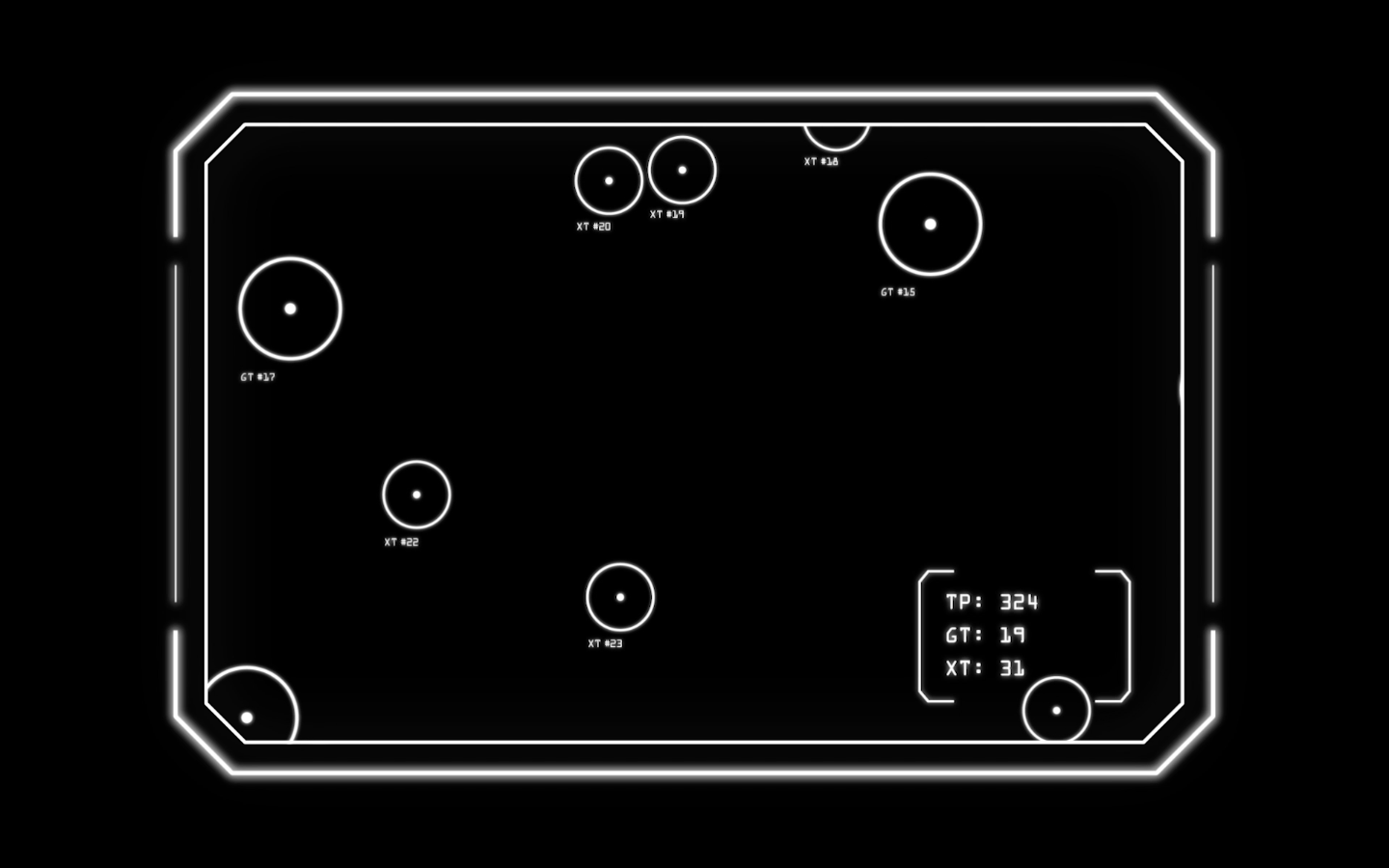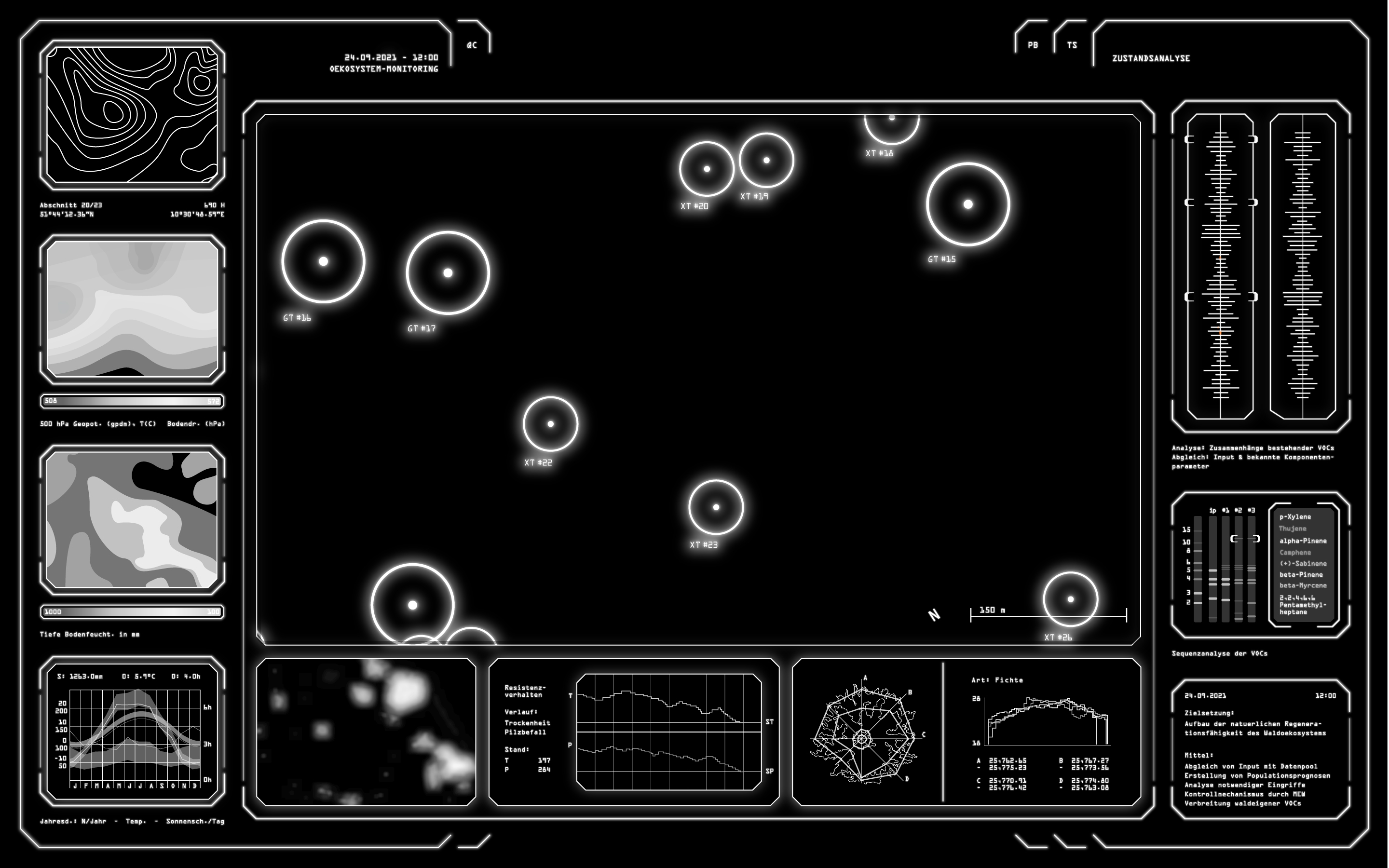This story is part of Next Generation, a series in which we give young makers a platform to showcase their work. Your work here? Get in touch and plot your coordinates as we navigate our future together.
Maike Gebker is a designer and researcher of speculative futures in the field of nature-technology interaction. Focusing on the nature of technical components, she specializes on the potentials of technology as a support for natural processes. In her master‘s project, she worked on supporting technologies for natural forest ecosystem regeneration, particularly mychorriza tree interaction.
The forest in itself is a constantly balancing ecosystem. Species, such as trees and the mycorrhizal network exist in a life-sustaining symbioses. The network is used by trees to send signals about external threats to collaborating plants. Due to effects of climate change, this symbioses is weakened by droughts and flooding. Therefore, the transfer of signals is no longer given and the health of the ecosystem is under constant risk. Due to these challenges, Maike Gebker created a speculative design project using AI, temporally bridging the communication gap of trees in the forest ecosystem.
The ecosystem communication is thereby bridged by FORSY-A, supporting the forest until the natural communication network is strengthened again.

FORSY-A (Forest Symbiotic Agent) tracks the meteorological and historical data of endangered forest areas through satellite monitoring, sensing and modeling techniques. Once extreme weather conditions are forecasted, FORSY-A analyzes the forest‘s air components for chemical compounds, emitted by threatened trees. As an agent-based learning algorithm, FORSY-A learns to understand the signals of trees in correlation with weather patterns and sensing data. If an attack of a herbivore for instance is detected, FORSY-A uses the data of the air components and instructs a mechanical laboratory to produce the chemical substance of the natural defense mechanism. Drones will then spray these substances in the endangered forest ecosystem to let distant trees naturally pre-immunize. The ecosystem communication is thereby bridged by FORSY-A, supporting the forest until the natural communication network is strengthened again.
Imagine if nature could – at some point – get so used to the new actor, that trees start to use technology for their own purpose.

FORSY-A is made to help the current forest ecosystem. With it’s help, the forest shall gain back the natural balance. But what if that changes? We can only wonder how nature would react to a new communication actor. Imagine if nature could – at some point – get so used to the new actor, that trees start to use technology for their own purpose.
Even the inclusion of humans for the goals of nature regeneration is imaginable via the connectedness of the internet.
If this artificial intelligence enters the cycle of the ecosystem as an accepted organism, new symbioses could even be established. Like us humans, some species could benefit from this new technology. In their own way, FORSY-A and the forest ecosystem ultimately pursue the goal of strengthening the regenerative power of the forest – so would this symbiosis be so wrong? Even the inclusion of humans for the goals of nature regeneration is imaginable via the connectedness of the internet.

Does nature have the same right to the almost unlimited possibilities of technology as we do?
FORSY-A and it‘s consequences can be used for reflecting the engagement of nature and technology. Does nature have the same right to the almost unlimited possibilities of technology as we do? Should we use technology to support nature in ways that we humans could not do on our own? With this speculative project Maike Gebker wants to questions the potential of technology as a tool to design for the more- than-human world.

Share your thoughts and join the technology debate!
Be the first to comment